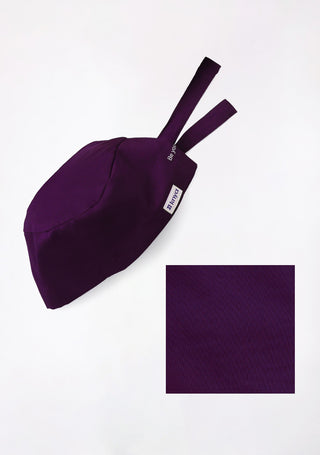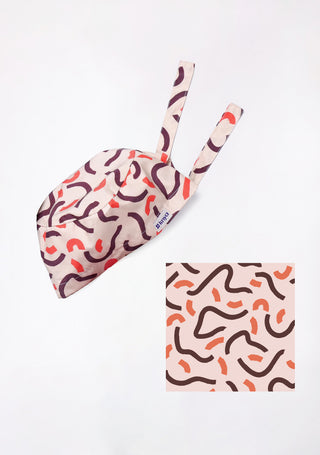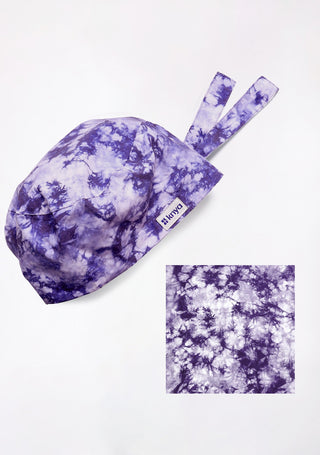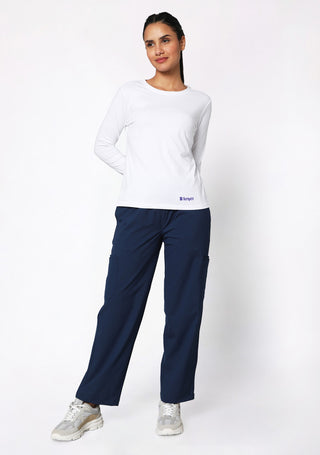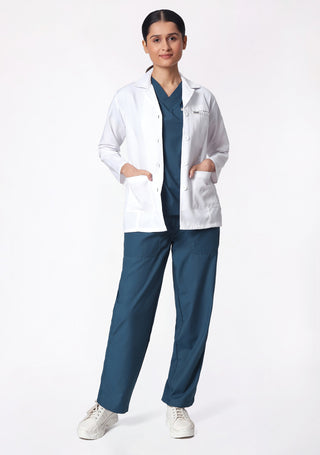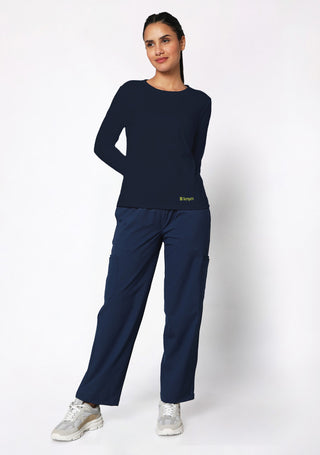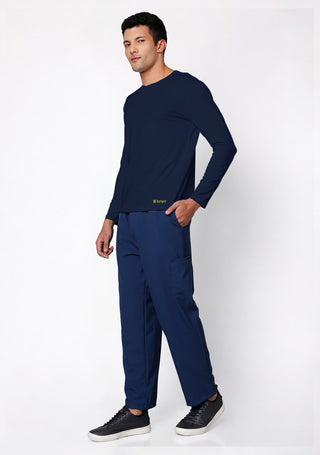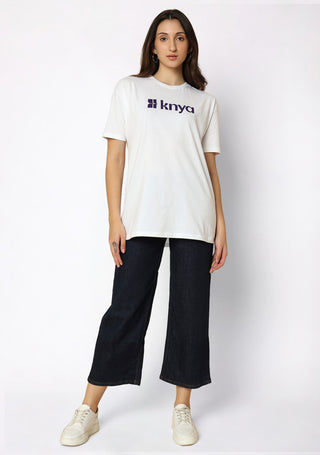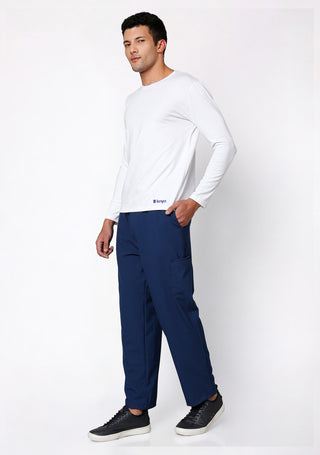Winter poses a unique challenge for healthcare professionals. Hospitals, clinics, and medical facilities are often kept at cooler temperatures to control infection, but this leaves doctors, nurses, and medical staff working long shifts in a constant chill. Medical scrubs, while comfortable, breathable, and easy to clean, are not designed to provide insulation against cold weather. This is where smart dressing strategies, layering with underscrubs, and choosing the right scrubs and accessories can make all the difference.
Knya offers a range of scrubs, underscrubs, and lab coats designed with both comfort and practicality in mind, making it easier for healthcare workers to stay warm without breaking dress code rules. This guide explains how to stay warm in scrubs during winter while maintaining a professional look and ensuring comfort throughout long shifts.
Click here to explore comfortable lab coats and discover our complete collection of comfortable and stylish medical apparel
Why Scrubs Feel Cold in Winter?
Scrubs are designed for comfort, hygiene, and movement, but they are usually made from lightweight fabrics that allow breathability. While this works perfectly in warmer seasons, winter highlights their limitations. Cold indoor air conditioning, drafty hospital corridors, and the need to move constantly between wards can quickly leave healthcare workers shivering. Unlike thick uniforms or insulated clothing, scrubs prioritize functionality over warmth. That’s why layering and fabric choice become crucial during colder months.
1. Layer with Underscrubs
Underscrubs are one of the best solutions for keeping warm in winter. A well-fitted, long-sleeve underscrub acts as a thermal base layer without making the uniform bulky. Materials like cotton blends, merino wool, or performance fabrics can provide insulation while wicking away sweat.
-
Knya underscrubs are designed to be soft, breathable, and comfortable for layering.
- They fit seamlessly under scrub tops without affecting movement.
- Long-sleeve underscrubs are especially useful for night shifts when temperatures feel lower.
Wearing underscrubs not only keeps you warm but also adds a layer of protection between your skin and the scrub fabric.
2. Choose Scrubs with Warmer Fabrics
Not all scrubs are created equal. While most are made with lightweight fabrics, some are tailored for cooler climates. Scrubs made with cotton-polyester blends or poly-spandex materials retain warmth better while still allowing flexibility.
When shopping, look for scrubs that:
- Have slightly thicker fabric weight.
- Offer stretch without compromising comfort.
- Stay breathable to prevent overheating during high activity.
Knya scrubs balance breathability and comfort, making them suitable for year-round wear, and can easily be paired with underscrubs or jackets for colder months.
3. Use Scrub Jackets and Lab Coats
One of the easiest ways to combat the chill is by adding a scrub jacket or lab coat. Many hospitals allow healthcare staff to wear them as part of the dress code.
-
Scrub Jackets: Lightweight but warmer than regular scrubs, often fleece-lined or made with thicker materials.
-
Lab Coats: Provide insulation, professionalism, and added storage space with pockets.
A Knya lab coat not only keeps you warm but also maintains a neat, professional appearance, which is especially important in patient-facing roles. Choosing a well-fitted coat prevents bulkiness while ensuring warmth.
4. Don’t Forget Your Legs
Most healthcare workers focus on keeping their upper body warm, but scrub pants can feel just as thin in winter. Wearing thermal leggings or base layers under scrub pants is an effective way to stay warm.
Look for:
- Moisture-wicking leggings that don’t trap sweat.
- Thin thermals that don’t create bulk under scrubs.
- Neutral colors that won’t show through lighter scrub fabrics.
This discreet solution provides lasting comfort during long hours of standing or walking.
5. Keep Feet Warm with the Right Socks and Shoes
Cold feet can make an entire shift uncomfortable. Since healthcare professionals spend hours on their feet, the right combination of socks and shoes is essential.
-
Socks: Opt for thermal or merino wool socks that wick away moisture while keeping warmth.
-
Shoes: Choose insulated, slip-resistant shoes suitable for hospital floors.
Pairing Knya scrubs with supportive, warm footwear ensures both comfort and safety during demanding shifts.
Ready to explore our amazing surgical caps collection? Browse the best here
6. Add Accessories Smartly
Although accessories need to be minimal in medical environments, some items can help during cold months:
-
Lightweight scarves can be worn during breaks.
-
Beanies or caps for commuting to and from shifts.
-
Gloves for outdoor or cold storage duties (not for patient interactions).
These extras provide warmth when moving between hospital wings or stepping outdoors in freezing temperatures.
7. Stay Active During Shifts
Movement naturally generates body heat. Even when work keeps you in colder environments, small bursts of movement such as stretching, walking between rounds, or simple mobility exercises can help keep your circulation strong and body temperature stable.
8. Hydration and Nutrition Matter
Surprisingly, hydration and nutrition also affect how warm you feel. Staying hydrated supports circulation, while warm fluids like tea or soup during breaks provide both comfort and warmth. Consuming energy-rich snacks can also help the body generate heat.
9. Find the Right Fit
Loose scrubs allow cold air to seep in, while scrubs that are too tight leave no room for layering. A tailored, comfortable fit helps trap warmth and makes layering easier. Modern scrubs, like those from Knya, are designed to fit well without restricting movement, keeping you both warm and professional.
10. Plan Ahead for Your Commute
Don’t forget the time spent outside the hospital. Wearing a warm overcoat, gloves, and insulated shoes during your commute prevents you from starting your shift already feeling cold. Once inside, you can switch to your scrub jacket or lab coat.
Conclusion
Winter shifts don’t have to mean shivering in thin scrubs. By layering with underscrubs, investing in warmer fabrics, choosing fitted scrub jackets or lab coats, and paying attention to accessories like socks and shoes, healthcare professionals can stay comfortable and warm without breaking dress codes.
Knya offers high-quality scrubs, underscrubs, and lab coats designed to keep healthcare workers functional and professional throughout every season. Staying warm is not just about comfort—it’s about ensuring focus, efficiency, and well-being during long, demanding hours.

